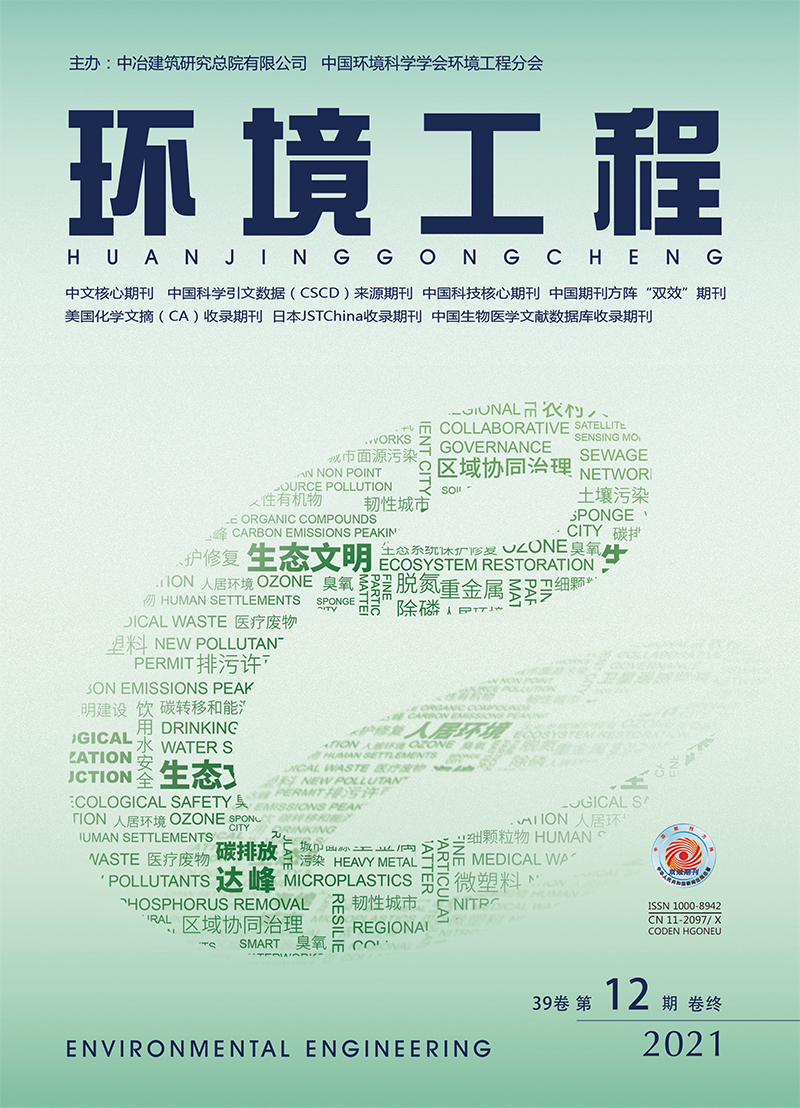| [1] |
刘佳澍,顾远,马帅帅,等.常州夏冬季PM2.5中无机组分昼夜变化特征与来源解析[J].环境科学,2018,39(3):980-989.
|
| [2] |
段文娇,郎建垒,程水源,等.京津冀地区钢铁行业污染物排放清单及对PM2.5影响[J].环境科学,2018,39 (4):1445-1454.
|
| [3] |
余钟奇,瞿元昊,周广强,等.2018年秋冬季长江三角洲区域PM2.5污染来源数值研究[J].中国环境科学,2020,40(10):4237-4246.
|
| [4] |
黄小刚,邵天杰,赵景波,等.汾渭平原PM2.5浓度的影响因素及空间溢出效应[J].中国环境科学,2019,39(8):3539-3548.
|
| [5] |
黄小刚,邵天杰,赵景波,等.长江经济带空气质量的时空分布特征及影响因素[J].中国环境科学,2020,40(2):874-884.
|
| [6] |
陈波,李少宁,杨新兵,等.北京春季PM2.5和PM10污染水平及影响因素研究[J].内蒙古农业大学学报(自然科学版),2018,39(5):36-44.
|
| [7] |
肖悦,田永中,许文轩,等.近10年中国空气质量时空分布特征[J].生态环境学报,2017,26(2):243-252.
|
| [8] |
黄含含,王羽琴,李升苹,等.西安市PM2.5中水溶性离子的季节变化特征[J].环境科学,2020,41(6):2528-2535.
|
| [9] |
杨文涛,姚诗琪,邓敏,等.北京市PM2.5时空分布特征及其与PM10关系的时空变异特征[J].环境科学,2018,39(2):684-690.
|
| [10] |
赵雪,侯丽丽,王鑫龙,等.基于LUR模型的2019年北京地区PM2.5与PM10浓度空间分异模拟[J].环境科学学报,2020,40(11):4060-4069.
|
| [11] |
郭庆元,杨晓春,吴其重,等.基于数值模拟对西安地区冬季一次重污染过程PM2.5区域来源解析[J].环境科学学报,2020,40(9):3103-3111.
|
| [12] |
YU M F,ZHU Y,LIN C J,et al.Effects of air pollution control measures on air quality improvement in Guangzhou,China[J].Journal of Environmental Management,2019,244:127-137.
|
| [13] |
SHEN L,JACOB D J,MICKLEY L J,et al.Insignificant effect of climate change on winter haze pollution in Beijing [J].Atmospheric Chemistry and Physics,2018,18 (23):17489-17496.
|
| [14] |
李岚淼,李龙国,李乃稳.城市雾霾成因及危害研究进展[J].环境工程,2017,35(12):92-97
,104.
|
| [15] |
雷钦.大气细颗粒物PM2.5的危害及其治理策略[J].低碳世界,2020,10(11):23-24.
|
| [16] |
ERIC L,ISAC L,MARIANNE H,et al.Ambient ultrafine particle concentration and incidence of childhood cancers[J].Environment International,2020,145:106135.
|
| [17] |
SOURANGSU C,SAGNIK D,SMITH K R.Ambient PM2.5 exposure and expected premature mortality to 2100 in India under climate change scenarios[J].Nature Communications,2018,9(1).
|
| [18] |
周广强,谢英,吴剑斌,等.基于WRF-Chem模式的华东区域PM2.5预报及偏差原因[J].中国环境科学,2016,36(8):2251-2259.
|
| [19] |
CHEN J J,LU J,AVISE J C,et al.Seasonal modeling of PM2.5 in California’s San Joaquin Valley[J].Atmospheric Environment,2014,92:182-190.
|
| [20] |
康俊锋,黄烈星,张春艳,等.多机器学习模型下逐小时PM2.5预测及对比分析[J].中国环境科学,2020,40(5):1895-1905.
|
| [21] |
DEUKWOO L,SOOWON L.Hourly prediction of particulate matter (PM2.5) concentration using time series data and random forest[J].KIPS Transactions on Software and Data Engineering,2020,9(4).
|
| [22] |
黄赫,周勇,刘宇杰,等.基于多源环境变量和随机森林的农用地土壤重金属源解析:以襄阳市襄州区为例[J].环境科学学报,2020,40(12):4548-4558.
|
| [23] |
史飞飞,周秉荣,颜亮东,等.近32年隆宝高寒湿地时空变化特征及其气候驱动力分析[J].高原气象,2020,39(6):1282-1294.
|
| [24] |
刘志壮,吕谋,周国升.基于小波组合模型的短期城市用水量预测[J].给水排水,2020,56(10):110-114
,131.
|
| [25] |
郭宇龙,李岚涛,陈伟强,等.基于红边光谱特征和XGBoost算法的冬小麦叶绿素浓度估算研究[J].红外,2020,41(11):33-43.
|
| [26] |
唐科,秦敏,赵星,等.基于Stacking集成学习模型的气态亚硝酸预测[J].中国环境科学,2020,40(2):582-590.
|


 Login
Login Register
Register E-alert
E-alert






 DownLoad:
DownLoad: